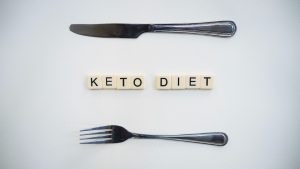Many people are now familiar with the phrase “intermittent fasting”. It’s been taking the fitness and health world to the forefront. This article will answer the most basic question about this new lifestyle: How Intermittent Fasting works?
In recent years, increasing numbers of people have begun to advocate an intermittent-fasting lifestyle that has many benefits. There are a handful of posts right here on eatmovehack.com featuring celebrities such as Tim Ferriss, Terry Crews, David Goggins as well as Alexis Ren touting the benefits they have gotten through an IF lifestyle.
There is other benefits to the intermittent fasting than being a popular diet trend?
To be able to answer this question, you’ll have to understand what IF really means and not.

How Intermittent Fasting Works?
Intermittent fasting, in its most simple sense, refers to the intermittent eating (often known as”feating) but absconding from eating (fasting).
This means that everyone intermittently fasts each all day of their lives. It’s a an integral part of us (as as other animals around the globe). We don’t eat calories continuously. We eat and then go to fasting.
If we are all already doing IF, then why is it that it has received such attention. You’ve probably been a part of the numerous stories about weight reduction, metabolic improvement, autophagy and general mental and physical improvement by using IF.
The distinction between the manner most people are fasting (in the sense of sleeping) and the manner in which IF fasting is really a matter of relating to the length of the fasting time and the time of fasting.
Standard American Diet
The common American is a fasting person every day. It is typically observed during sleep. It is then broken by the traditional, and called the most important breakfast of the day: breakfast. The idea of fasting daily is a part of the concept in itself. We “break the fast” with breakfast.
Everyone has a breakfast break at some point during the daytime (except those who are fasting for more than the 24 hour mark, though we’ll try not to be distracted at this moment). Breakfast is often thought of as to be a breakfast that we eat early in the morning however the term “breakfast” simply means the breakfast that interrupts the fasting phase.
Nowadays, a majority of Americans will break their fasts each morning with something like “breakfast” food – eggs bacon, cereal, eggs, bagel and so on. This is their daily fasting time. They will not be able to fast until they reach asleep the next day.
During the daytime, most Americans consume multiple meals.
American Eating Schedule
Breakfast:
The day starts with breakfast and breakfast time is 7 am. On average, it takes four and five minutes until your stomach is completely empty after having eaten an entire meal.
Snack:
A snack is consumed at mid-morning for the majority of people due to the time that is thought to be important to increase metabolic rate to keep that fire going. There isn’t enough time passed between breakfast and the mid-morning snack in order for stomach contents to empty.
Lunch:
Lunch time rolls around. The stomach is filled with calories.
Mid-Afternoon Snack:
To keep from an afternoon slump (and to keep your metabolic rate up) the majority of people reach for a snack in the middle of the afternoon also. Stomach isn’t completely full.
Dinner:
When dinner time comes around, the stomach has still consuming lunch and mid-afternoon snacks is replenished at this point.
Dessert:
A large number of people after dinner are likely to reach for a kind of dessert to cap off the day. Let’s suppose that this occurs around 9 pm.
Thus, from 7 am at which point you broke your fast with your first meal in the morning, to 9 PM, when you ate the last of your calories meal, your body was taking in food throughout the day. It was fuel, through food throughout the throughout the day. This means that your body wasn’t required to enter a fasting condition because it was fueled by exogenous energy throughout the day.
This article isn’t designed to discuss good food as well as bad. This article isn’t meant to decide that you must eat 6 times per each day. It is more to discuss the differences between intermittent fasting and from the typical American “fasting” method.
How is Intermittent Fasting Different?
The major difference between the conventional American practice and IF is in the duration. This is among the most important aspects to consider taking away when you are trying to understand the basics of the process behind intermittent fasting.
From the above, most people stop eating at 9 pm and will break for breakfast at 7 am. This is a 10-hour period of fasting.
It doesn’t consider the interval between stomach emptying. The fervent supporters of IF are adamant that nobody “fasts” until their stomach is empty. If you stop eating after 9 pm, you might not be able to eat until 2 am. The purists say this is the time when your fast starts. It’s a five hour fast starting at 2 AM until 7 AM. It is difficult for a majority of people to maintain but. Many people simply run from the time they last consumed calories.One important point – you’ll observe that I use the word “calories”. This is applicable to food items as well as calorie drinks that contain calories. There’s also a lot of research suggesting that foods that are not calorie-free, like sweeteners that are sugar-free, can help break the speed. That’s beyond the scope for this piece.
It All Comes Down To Time
It is different due to the time of time between meals is increased. If, for instance, you typically consume food at 7 am, you can extend it until noon, or at 2 PM or 8 pm. In this course, we’ll be discussing the various methods of fasting however, this is merely providing examples of the extended periods of fasting.
When you have finished your fasting time, you’ll have “breakfast”. The meal breaks your fast. It is my opinion that the break-fast meal will be the main breakfast throughout the day. This is where you replenish the body following a long period of fuel deficiency. I’m not convinced that it should be waffles in the morning at 7am.
This, in essence is the main difference between an IF routine and a regular routine.
Isn’t Fasting a Fancy Word for Starving?
This is a question that’s asked frequently and it shows that the majority of people aren’t aware of the process of intermittent fasting. Fasting is thought of to people who aren’t used to it to be similar to what we consider to be “starving”.
My opinion is that the usage of the term “starving” in developed countries has led to this confusion. Many people claim that”I’m “starving” between lunch and dinner time if they’ve not eaten an afternoon snack. They claim this, knowing that they’re not actually hungry.
To be starving is to die due to insufficient food. It usually means that you are unable to obtain food. The majority of people who are hungry are not able, under their control, to obtain food.
Fasting is often voluntary. It’s a time that is self-deprivation from food due to different reasons (health and religious.). Fasters generally are in charge of the power to bring the fast to a close.
Fasting and starving both require the absence of food. But they’re different.
Now that you understand the benefits of intermittent fasting, is it time to start?










